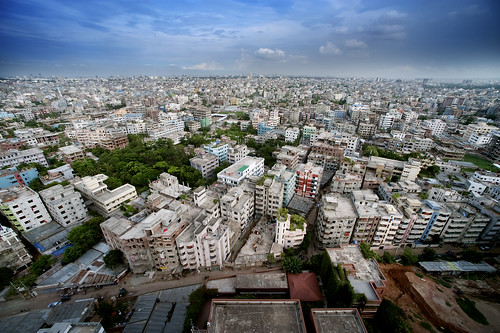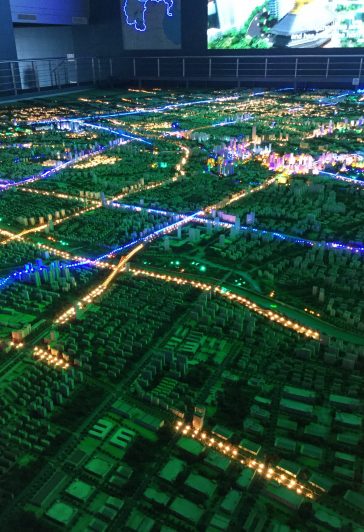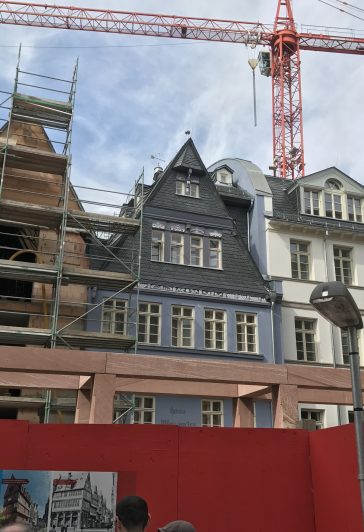by Shaikh Muhammad Mehedi Ahsan

Bangladesh remains a predominantly agrarian country with only 27% of the population – around 38 million people – currently living in urban areas. Since the independence in 1971, Bangladesh has been experiencing rapid urbanization; between 1975 and 2005 the percentage of the total population in Bangladesh living in urban areas rose from 10% to 25% (BURT 2004). Despite the recent decline in overall population growth, rural to urban migration has sustained a high rate of growth However,while the present level of urbanization is still relatively low, the urban population growth rate is 2.5%,which is significantly higher than the 1.4% growth rate of the population as a whole. As a result,the urban population is predicted to reach 51 million by 2015,or 32% of the total population.
At the same time the contribution of towns and cities to national GDP has also been increasing rapidly,expanding from 26% in 1972 to more than 50% by 2005 (mentioned by Mehedi Ahsan, Alexander Jachnow & Matthew Walsham-2010). It is important to note that while the export-orientated sectors such as the garment industry have contributed significantly to the growing dominance of the urban economy,it is the informal sector – from domestic workers to micro-entrepreneurs – that provides employment for more than 70% of the urban workforce. The majority of the urban population in Bangladesh is concentrated in a few large cities. Dhaka – with 13 million people and an annual growth rate of 4% – accounts for about 40% of the national urban population. Together with three other large metropolitan cities – Chittagong,Khulna,and Rajshahi – these four cities contain over 56% of the total urban population. Nevertheless,a significant proportion of urban dwellers – at least 31% – reside in 308 ‘Pourashavas’ (municipalities or ‘secondary cities’) and there is increasing international recognition that these cities contribute significantly to sustainable urbanization,economic growth and strengthening rural economies through rural-urban linkages with smaller market towns (mentioned by Mehedi Ahsan, Alexander Jachnow & Matthew Walsham-2010).
However the rapid pace of urbanization remains mainly unplanned, unrespondent and unrecognized resulting in negative impacts in the urban area. This phenomenal rate at which urbanization is occurring has made it extremely difficult to manage the urban infrastructure and service delivery in an efficient manner. Six city corporations and 308 Municipalities of the country suffer from acute problems of deteriorating infrastructure in the form of poor housing, inadequate availability of drinking water, paucity of drainage and sewerage facilities, virtual breakdown of local public transport, and pollution. Homeless population in most cities is on the rise and the slums and squatter settlements have become integral part of urban life in the country. Such chaotic urban development with the accompanying unemployment, environmental degradation, lack of basic services, crime and the proliferation of slums are seen by many as a danger or an obstacle to human development.
Pourashavas (Municipalities) as the principal structures of Urban Local Government in Bangladesh have a long history in providing basic services and playing the key role in Urban Development. However it is learned that “In order to promote balanced urban growth in Bangladesh and ease the pressure on the resources and infrastructure of the larger cities, it is essential to develop the potential of the Pourashavas (secondary cities). Improved local governance and urban management will help make them dynamic, livable cities where people can earn a living, educate their children, and find decent housing with basic facilities. The Pourashavas of Bangladesh currently lack basic infrastructure and are unable to provide essential services, particularly for poor people. However, experience has shown that it is not enough to construct roads, water pipes, and drains, for example. Cities do not consist of buildings and municipal works; cities consist of people, who must be involved in the planning, management, and use of urban infrastructure” (GIZ Good Urban Governance Project).
The legal and institutional framework for equitable urban development, tenure security and basic service delivery is still weak. Scholars underline, that a national urban planning law for inclusive urban development can significantly contribute to this framework.
Despite the considerable challenges that still exist, it is highly encouraging that Bangladesh has recognized the importance of urban governance improvement. The sixth five year plan of Bangladesh contains a separate chapter on urban challenges and a wish list goal for improving local governance and interventions are now focusing greater attention on governance reform to enable municipalities to work more efficiently. However, future efforts are needed to work on improvement in effective participation in planning processes for the urban poor in municipal development in general and active engagement in maintenance of community facilities in particular (with provision of adequate operations and maintenance cost). The sixth five year plan underlines comprehensive efforts at every level to target poverty reduction. There is an opportunity to emphasize the importance of this national over-arching goal by issuing specific instructions relating to the preparation and implementation of direct poverty reduction at the municipal level.
References
1. This text bases strongly on texts jointly written by the author, Alexander Jachnow (GIZ Bangladesh) & Matthew Walsham (Independent Consultant) titled “Ensuring socially inclusive urban development – an international perspective on planning in Bangladesh”, November 2010, published by Bangladesh Institute of Planners (BIP) on the occasion of World Town Planning Day.
2. CARE Bangladesh, Plan Bangladesh; UNICEF and Water Aid, 2004. Position Paper, The Urban Round Table, Dhaka secretariat of Bangladesh Urban Round Table (BURT).
3. GIZ Good Urban Governance in Urban Areas Project Description. Can be accessed on the homepage of the Embassy of the Federal Republic of Germany in Bangladesh, http://www.dhaka.diplo.de
________________________
Shaikh Muhammad Mehedi Ahsan is a Bangladeshi Urban Planner. He completed his bachelor of Urban and Rural Planning in 2002 & Master of Governance and Public Policy from Bangladesh in 2008. He has ten years of work experience as Urban Development and Local Governance Expert in different donor funded projects in Bangladesh. Prior to joining the MSc in TU Berlin he was working in GIZ Bangladesh as Regional Coordinator of Good Urban Governance Program for three years.

